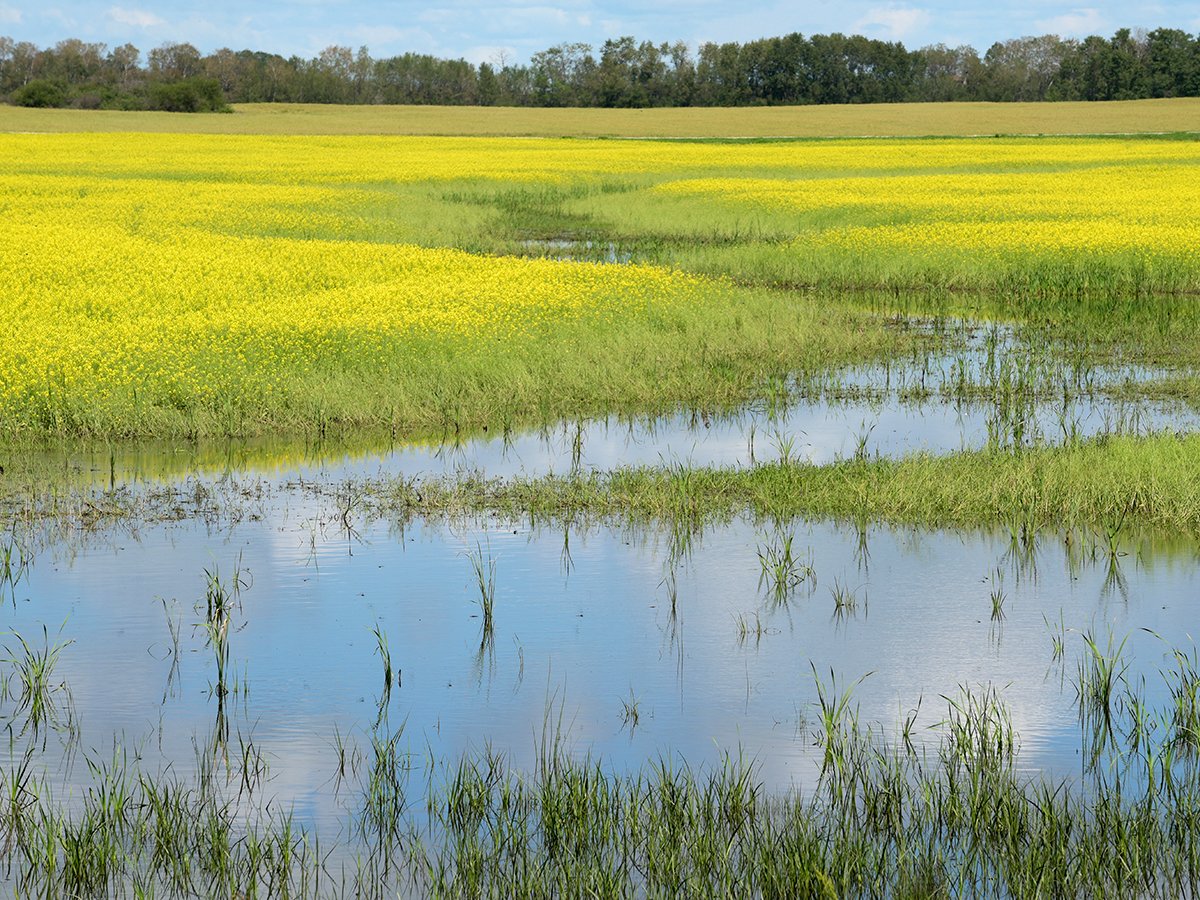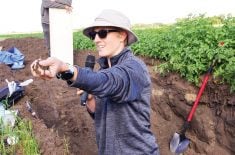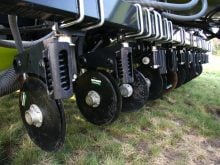REGINA — The Quill Lakes Watershed Association says a lack of provincial money could force it to close without ever finding a solution to flooding.
Chair Ian McNichol said the association and the province’s Water Security Agency don’t agree on what to do next.
The two have worked together in the past to find ways to keep the saline lakes from overflowing, but recent proposals from the association did not get funding, McNichol said.
Read Also

Stacking Canada up on gene editing livestock
Canada may want to gauge how Argentina and other countries have approached gene editing in livestock and what that has meant for local innovation.
The Quill Lakes are terminal, without a natural spill outlet, and lake levels began to rise in 2005. Each year, runoff events and rain contributed to higher levels.
Significant rain and rising levels occurred in 2010, followed by the flood of 2011 that hit much of southern Saskatchewan and parts of Manitoba. By 2018, the lakes had risen seven metres, flooded agricultural land, roads and highways, and put a major railway at risk. One economic study pegged losses between 2012 and 2018 at $253 million.
McNichol said the WSA asked the QLWA to develop a flood mitigation project but then declined to move forward on any of the proposals.
The most recent request through the Agricultural Water Management Fund was deemed too costly with limited long-term impact, according to the association.
Krystal Tendler, executive director of agriculture water management at WSA, said multiple solutions have been contemplated over the years by WSA and stakeholders.
“We looked at diverting inflows, creating upland storage, irrigation, removing water from the lake, reducing inflows, holding water in the lake, all the different angles we could think of, and significant investment into all these studies over the years from WSA and others, but at this point we just really haven’t found a silver bullet,” she said.
Tendler said this shows how difficult it is to fight against nature, and if there were an easy answer, it would already have been pursued.
The most recent study funded by WSA and received last April looked at diverting water from the Quills. She said it cost $100 million and didn’t provide any solution.
Another project that WSA and stakeholders are working on is upstream irrigation to prevent water from reaching the lake.
Tendler said she believed QLWA issued a press release saying it may have to shut down because it didn’t receive funding for another project earlier this spring.
“At that point we said, ‘look, we’re not ready to fund another study until we kind of grasp where we’re at, what we’ve looked at and what’s left to look at,’ ” she said.
Lake levels have been dropping after a few drier years and in April were 1.2 metres lower than the peak. Some agricultural land has been reclaimed by farmers. Tendler said it appears salinity does improve within a year or two after the water retreats, and that speaks to soil resiliency.
McNichol said the QLWA doesn’t expect WSA to fund entire projects but should pay a share. He is also concerned about a recent engineering report he received that indicates the association has to purchase right-of-way for a diversion project rather than only obtain land control. That would cost $7 million.
“We’ve spent $1.7 million over 10 years trying to come up with a project that WSA is happy with,” he said.
The QLWA did get funding from local municipalities through levies; McNichol said only administration costs have been paid by levies in the last few years.
McNichol said many pointed the finger at unauthorized drainage by farmers as a cause of the flooding. He believes it’s greater than that.
“Man has manipulated the landscape so much that that’s what’s causing this problem,” he said.
“High rain events and the way we’ve changed the landscape, just living and doing agriculture and building roads and changing roads, moving this here, moving that there, it’s caused an issue for us. The natural channel doesn’t flow like it used to.”
Tendler said people in the area want to manage their water through drainage, but consolidation is the only tool right now.
McNichol is worried the WSA is holding off on a solution because lake levels have dropped and it can eventually say the problem is gone.
“We would like to come up with a long-term solution that’s going to take some time to develop and get the lake down to a level where 100 years down the road this isn’t going to happen to the next three generations that are farming,” he said.
McNichol said levels are down, but a high wind will still cause water to move out of the lake nearly one kilometre and flood crops and pasture.
While some crop land has been reclaimed, a former community pasture is still flooded. The road between Big Quill and Little Quill was flooded but is now open.
McNichol also said a lot of land owned by agencies such as Ducks Unlimited is still flooded. There is still a significant amount of good habitat in the area, he added.
WSA and QLWA were scheduled to meet Sept. 18 to discuss how to move forward.
















